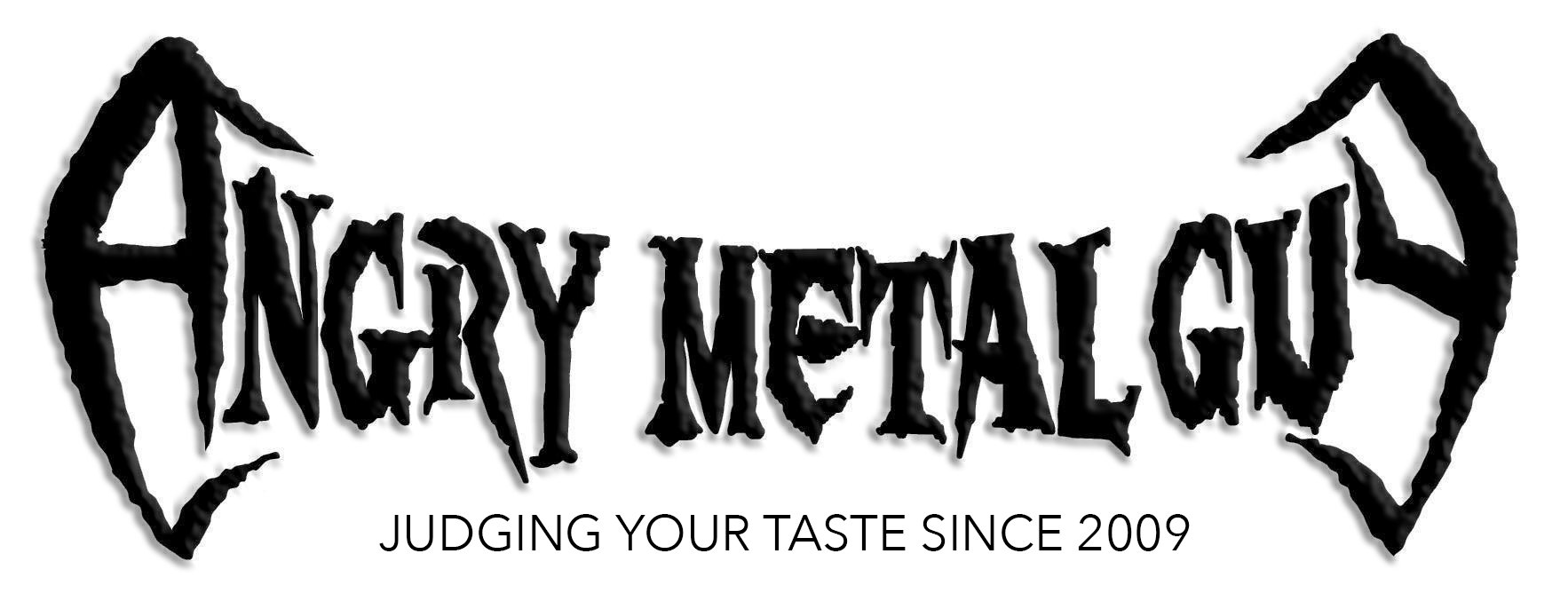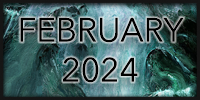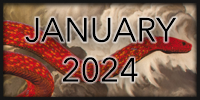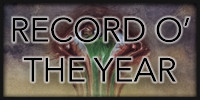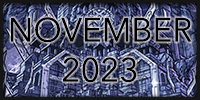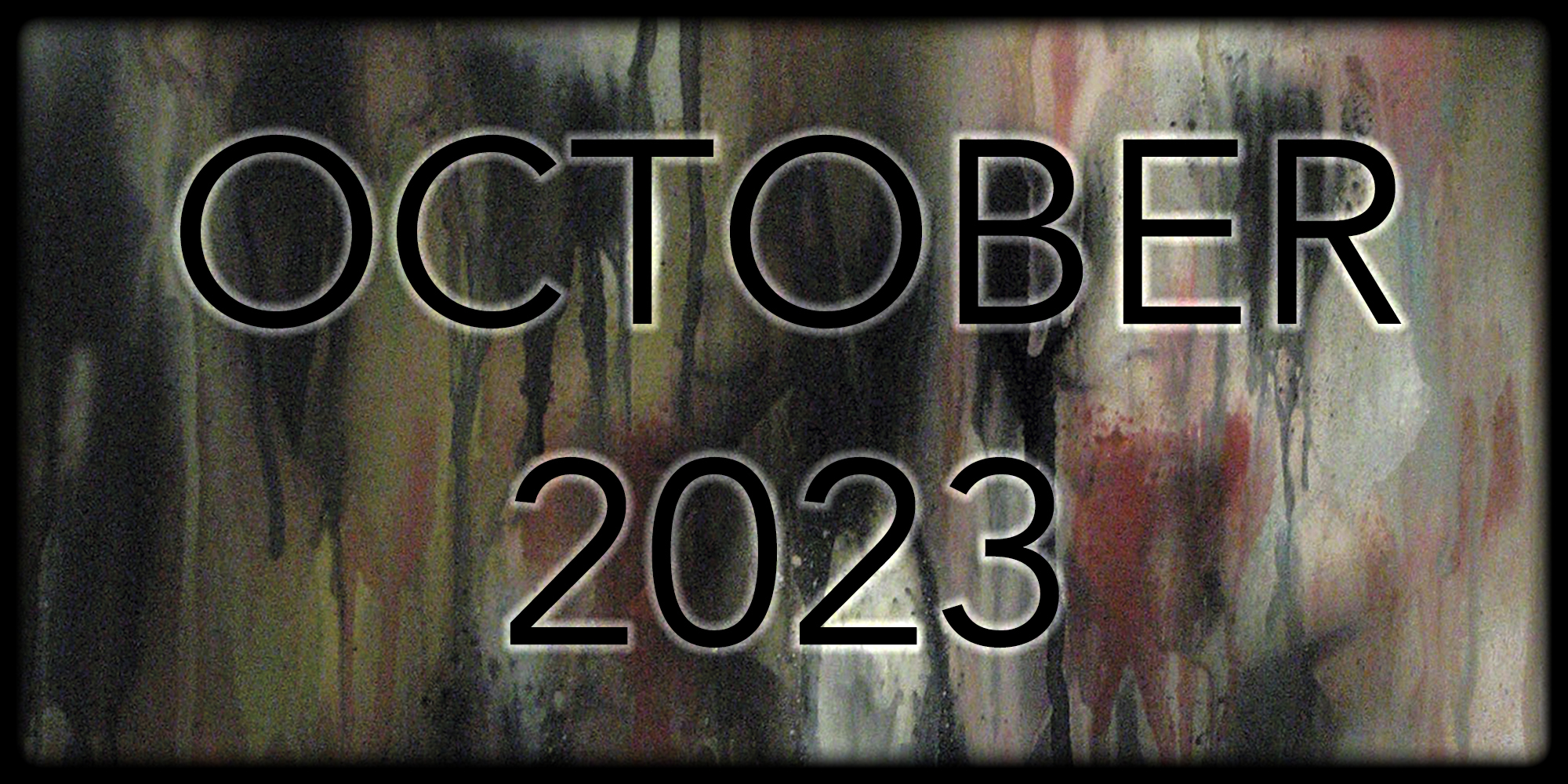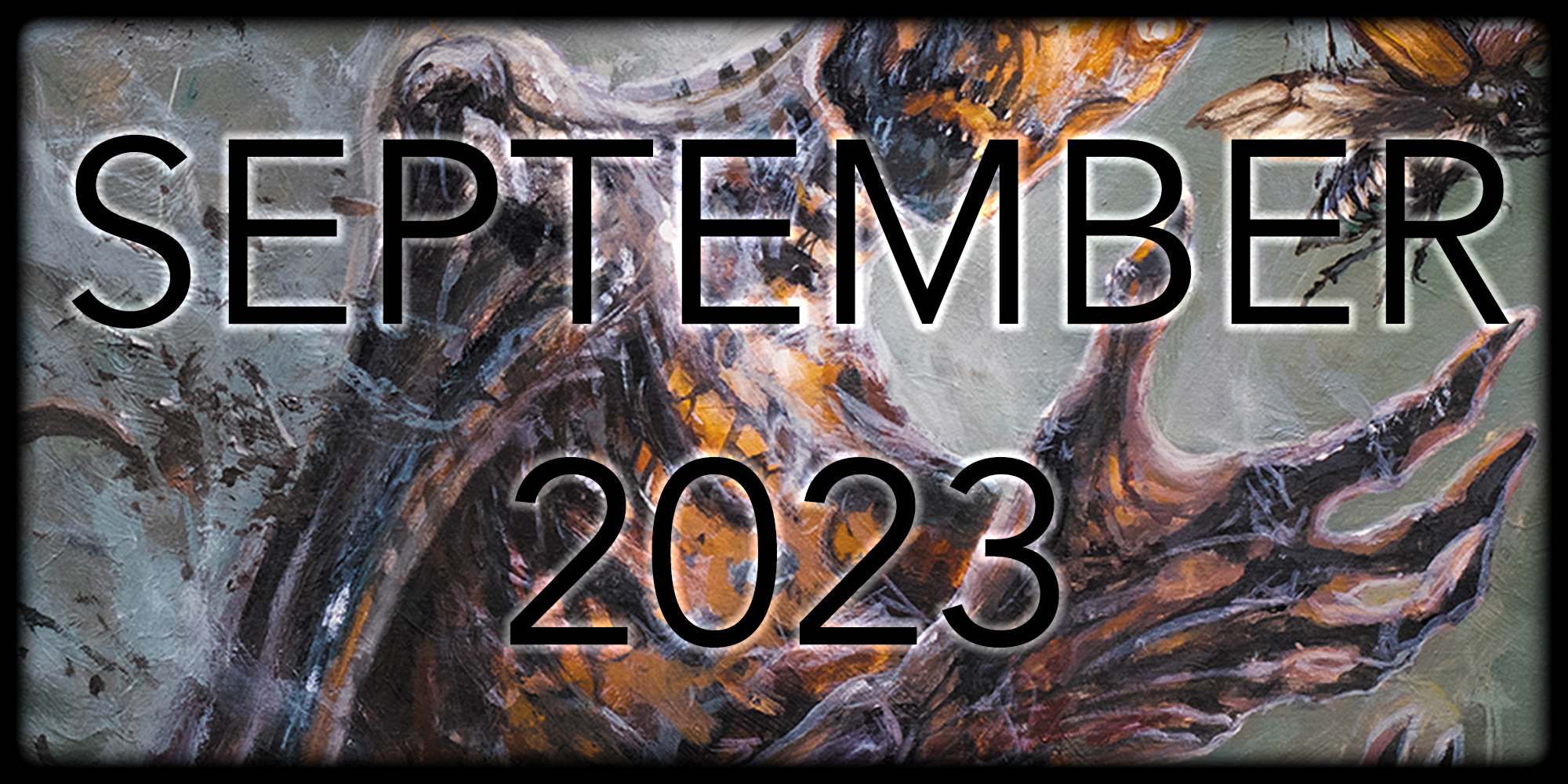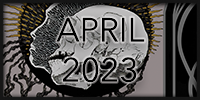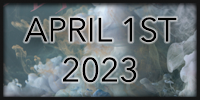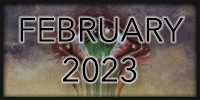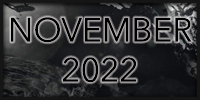
Wilderun’s Sleep at the Edge of the Earth was a revelation. The record was a powerful blend of ideas that was as enchanting as it was addictive. It was epic and sprawling and my (and the staff’s) Record o’ the Year from 2015, and it came with an elevator pitch as snappy as: “Opeth meets Turisas.” And while this is a simplification that does not do the brilliance of Sleep at the Edge of the Earth justice, it is a good reference point. Because after four years, with my understanding being that Veil of Imagination was done for at least a quarter of it, this elevator pitch does not seem to have enticed anyone to pick the band up. This is absurd, as even after Sleep at the Edge of the Earth, the band was clearly among the most exciting bands in metal. But on Veil of Imagination, Wilderun has not only grown, but they have raised the bar for what progressive and melodic death metal can be. Veil of Imagination is one of the most imaginative, beautiful and interesting records that I have ever heard.
Veil of Imagination is a complete album that is worthy of its length. While other bands have referred to their songs as “movements,” the term is the only appropriate name for what Wilderun has wrought. From the fourteen and a half minutes of “The Unimaginable Zero Summer” to the out of tune outro on “When the Fire and the Rose Were One,” everything flows with the kind of practiced grace that few bands not named Pink Floyd or Symphony X have ever accomplished. The pacing, when seen from a bird’s eye view, is genius. Whether Wilderun recapitulates a riff which transitions perfectly between songs (“O Resolution!” to “Sleeping Ambassadors of the Sun”), or subtly changes key and feel over the course of three minutes before merging into the next movement (“Scentless Core (Fading)” to “The Tyranny of Imagination”), the transitions are brilliant and seem effortless. Veil of Imagination even has a three act feel. The first three tracks spend most of their time in 6/8; that unmistakably Opethian swing (clearest on “The Unimaginable Zero Summer”). The next three tracks comprise Act II with a majestic and powerful Turisasian flare (“Far from Where Dreams Unfurl”). And finally, Act III is comprised of “The Tyranny of Imagination” and “When the Fire and the Rose Were One,” which emphasize dissonance and consonance. These sounds, of course, blend throughout the album, but each act has its own emphasis.
Talk of “movements” and “acts” emphasizes that Veil of Imagination is a clear development of the band’s sound toward the truly symphonic. While the transitions are one part of this, orchestral arrangers Dan Müller and Wayne Ingram craft fantastic beds of strings and choirs that make Wilderun distinct. Rather than being a metal band playing with an orchestra, the band is part of the orchestra. This is helped by the combinations of piano and violin (“The Unimaginable Zero Summer” or “Scentless Core (Budding)”) which merge into something always more intense and grand (“Sleeping Ambassadors of the Sun”), with plenty of Finnish New English Man Choir to add an extra layer of drama.1 The band uses a variety of sounds one rarely hears in metal—harps (“O Resolution!”) or fluttering piano and flutes (“When the Fire and the Rose Were One”)—and these give a true sense of orchestral mastery.
The album’s symphonic nature, of course, still contains a metal spine. Wilderun demonstrates this with Evan’s ferocious death metal growl and classic, if idiosyncratic, metal riffing. Aside from the album breaking out the door with blasts and death metal groove, “Far from Where Dreams Unfurl” features noodly melodic death riffs with counter-intuitive harmonies, while “Tyranny of Imagination” starts out with a sinister symphonic death feel. Joe Gettler’s guitar solos (like on “O Resolution!” and “Far from Where Dreams Unfurl”) are a reminder that these guys just have chops. The same is true of Jon Teachey’s drums pushing into blasts at times or tom heavy fills, while the bass features prominently throughout, with Müller delivering a heavy, driving performance that reminds me at times of Martín Méndez (“O Resolution!” and “Sleeping Ambassadors of the Sun”). Yet, never does the symphonic conflict with the metallic, either thematically or sonically; they work in perfect balance.

The genius of this album is the way it balances contrast both in feel and dissonance. What makes Veil of Imagination something more than just a continuation of Sleep at the Edge of the Earth is it has a unique voice which speaks to its concept. And this is where I worry it will lose some listeners. One of the most interesting and sophisticated things about the album is the way that it plays with dissonance and consonance. This can give the feeling to listeners that the melodies aren’t quite as ‘strong’ as on Sleep at the Edge of the Earth. Close listens, however, reveal evocative ideas that sonically represent the album’s concept. For example, they modulate major keys in “Scentless Core (Budding),” never really staying in one place for long—which builds a sense of uneasiness with blaring horns until the fever breaks down to a single piano. The bridge (at about 4 minutes) in “Far from Where Dreams Unfurl” follows a similar pattern, building tension for almost 90 seconds before releasing. But the peak of this is in “The Tyranny of Imagination,” where Wilderun works with half-steps and naturals in order to keep the tension building. At times this approach reminds me of Septicflesh at their best, but unlike Septicflesh, Wilderun balances these moments with ample resolution. In these moments, Evan’s baritone cleans often work with only a piano or acoustic guitar to cleanse the pallet and set the stage for the next burst of color and flavor.
Veil of Imagination is the result of Wilderun masterfully executing its vision through developments in both composition and style. The album speaks to fundamental human struggles and mirrors the tension and release of negative ideation of the future. This can be seen from the cover art, as well. The beating, surreal heart of Veil of Imagination is a twisted tree draped with blooming flowers—where the fire and the rose met, and where “all manner of thing shall be well.”2 And time and time again, Wilderun delivered with their aesthetic choices. From a Dan Swanö mix that sounds timeless, to a Jens Bogren master which, while loud, delivers the kind of balance that made his work on Fleshgod Apocalypse and Turisas indispensable. And suddenly, it seems, that Wilderun isn’t just an excellent, if underappreciated band. With Veil of Imagination, Wilderun has arrived at the vanguard of the next generation of progressive and melodic death metal bands. Veil of Imagination raises the bar by delivering an intense, grandiose and sophisticated, yet ultimately human, experience.
Rating: Iconic
DR: 6 | Media Reviewed: PCM (i.e., CD quality files)
Label: Independent
Websites: wilderun.bandcamp.com | wilderun.com | facebook.com/OfficialWilderun
Releases Worldwide: November 1st, 2019
Written By: El Cuervo
 It is impossible for me to overstate the excellence of Wilderun’s 2015 record, Sleep at the Edge of the Earth. I was a relative rookie at reviewing but immediately identified it as a special release, escalating it within another year or two to one of the best albums I’ve ever experienced. 2018 rolled around and my feet began to itch; the three-year album cycle in which most modern metal bands operate did not yield a new release and relative social media inactivity led to awful thoughts that I may not hear a successor. To my simultaneous relief and trepidation, I learned of the November release of Veil of Imagination and obtained a review copy shortly thereafter. The relief arose for obvious reasons, but the trepidation perhaps less so. How could it possibly hope to match my sentiment for Sleep at the Edge of the Earth? I tried to quash my expectations but I still took time out from a holiday abroad to download and sit down with it. What were my initial thoughts? What are my thoughts now, 6 weeks later?
It is impossible for me to overstate the excellence of Wilderun’s 2015 record, Sleep at the Edge of the Earth. I was a relative rookie at reviewing but immediately identified it as a special release, escalating it within another year or two to one of the best albums I’ve ever experienced. 2018 rolled around and my feet began to itch; the three-year album cycle in which most modern metal bands operate did not yield a new release and relative social media inactivity led to awful thoughts that I may not hear a successor. To my simultaneous relief and trepidation, I learned of the November release of Veil of Imagination and obtained a review copy shortly thereafter. The relief arose for obvious reasons, but the trepidation perhaps less so. How could it possibly hope to match my sentiment for Sleep at the Edge of the Earth? I tried to quash my expectations but I still took time out from a holiday abroad to download and sit down with it. What were my initial thoughts? What are my thoughts now, 6 weeks later?
Veil of Imagination is not a record repeating the formula of its predecessor; it’s denser, more progressive affair. Opener “The Unimaginable Zero Summer” hits like a truck and is offensively long, terribly progressive and dizzyingly dense. It’s a baptism of fire signifying that Wilderun did not write a record just intending to ride the coattails of former glory. The incredible scope of sounds and instrumentation is even wider and these 14 minutes feature some legitimately heavy, overwhelming passages. Wilderun will cater to no one in executing their vision and do not make things easy for the listener. While Sleep at the Edge of the Earth broke the “Ash Memory” suite into four parts, there’s no bite-sized partitioning on Veil of Imagination. This is symptomatic of the record more widely, which is less catchy and more challenging at first blush. It’s a more somber album overall and a feeling of loss comes through. The band’s approach on Veil of Imagination isn’t inherently a bad thing though; it’s not a record full of hooks, but there are melodies which embed on repeated listens and they’re all the stronger in the long run for making the listener work a little.

Veil of Imagination still features the earthy tone and lyrical themes which tie the sound to folk metal, but is not substantively folk metal anymore. I consider the last record as a folk umbrella, under which resides a fusion of progressive rock, death and symphonic metal. These elements remain but the bouncing, lighter energy has dwindled, replaced with a richer and more cohesive blend which also incorporates black metal, notably on “The Unimaginable Zero Summer” and “The Tyranny of Imagination.” The record is further distanced from Opeth and Turisas as could be heard previously, though fragments surface occasionally. This iteration of Wilderun sounds more unique due, in part, to aesthetic changes. For example, the clean, harmonic, lead guitar tone favored on the band’s 2015 opus arises infrequently, while Evan Berry’s cleans don’t evoke Åkerfeldt as he develops his own, plaintive style.
The greatest change on Veil of Imagination is the development of a more symphonic sound. This is exemplified by the passage beginning at 1:55 on “Scentless Core (Budding).” The transition is literally marvelous; you will truly marvel at it. In this jaw-dropping moment, the penny falls and the listener is wrapped in a hurricane of blasting drums and piano scales, ascending and descending. Wilderun draws their symphonic arrangements, elaborate orchestrations, ridiculous grandiosity and real heaviness into masterful compositions. Not only do they utilize a diverse range of instruments, well outside the purview of the usual symphonic metal ornaments, but more importantly they are arranged with an admirable awareness for dynamics; sometimes utilizing the full orchestra and at other times isolating one or two instruments. I’ve not heard such an excellent integration of classical instruments into metal since Griseus by Aquilus.3 There are many other moments I could detail but, in particular, I want to note the way the strings flutter at the opening of “Sleeping Ambassadors of the Sun” and at the closing of “The Tyranny of Imagination.” These hark back to John Williams when he is trying to convey the sense of wonder in space used on the Star Wars soundtracks, and the effect is similar here.

Veil of Imagination, if it were not already apparent, is epic. It is epic in vision and execution. It’s not just symphonic by using classical instruments. The album is symphonic in the true sense. Each of these songs is so vast, detailed and cohesive that listening to them is more like surveying an intricate map, where the particular journey adopted by the band leads you through a beginning, middle and end. It simultaneously boasts a wider scope than almost any other music, but is also so minutely detailed that you could take a one minute passage at random from anywhere on the record as the basis of an entire descriptive paragraph. And it feels like that could be done for the entire 67 minutes. All parts stand on their own but contribute to the whole, which is the entire objective of the album format.
I’ve already written nearly 900 words and could write many more. I’ve not even mentioned song of the year candidate “Far from Where Dreams Unfurl,” or how the concept and arrangement of the record as a whole influences the sense of cohesion and completeness. But in summary, I’m left with one more question, and one I expect commenters will want to know the answer to: does my heart swell in the same way as it does for Sleep at the Edge of the Earth? Perhaps not. But that’s a verified 5.0 and a true all-timer. So Veil of Imagination is fighting a Sisyphean battle in that sense. It’s a more challenging record and one which has fewer heart-stopping moments on first listen. But what it is, is grand. Pompous. Ridiculous. Overwhelming. Heavy. Subtle. Ornate. Epic. And it’s the best record I’ve heard this year.
Rating: 4.5/5.0
